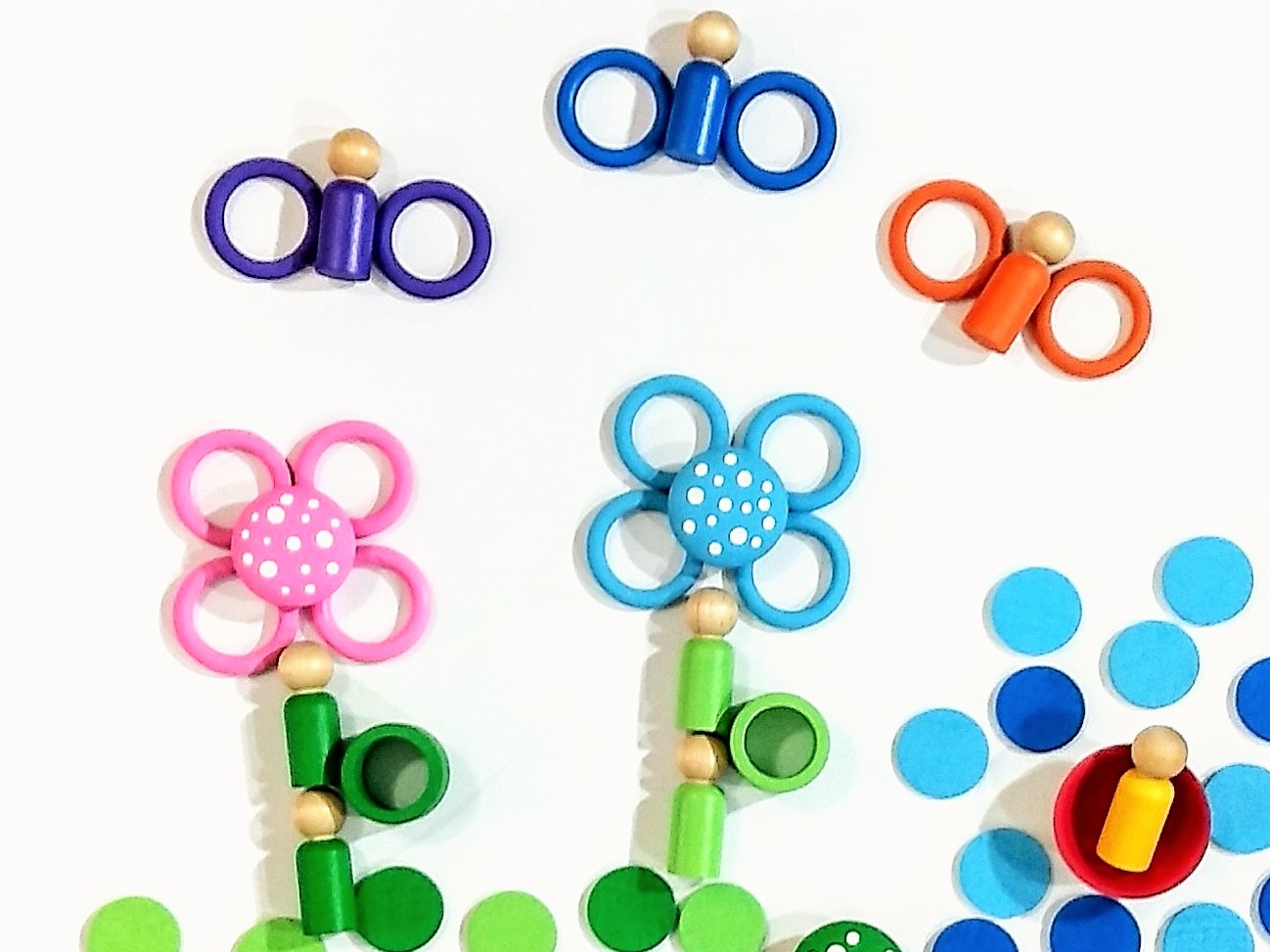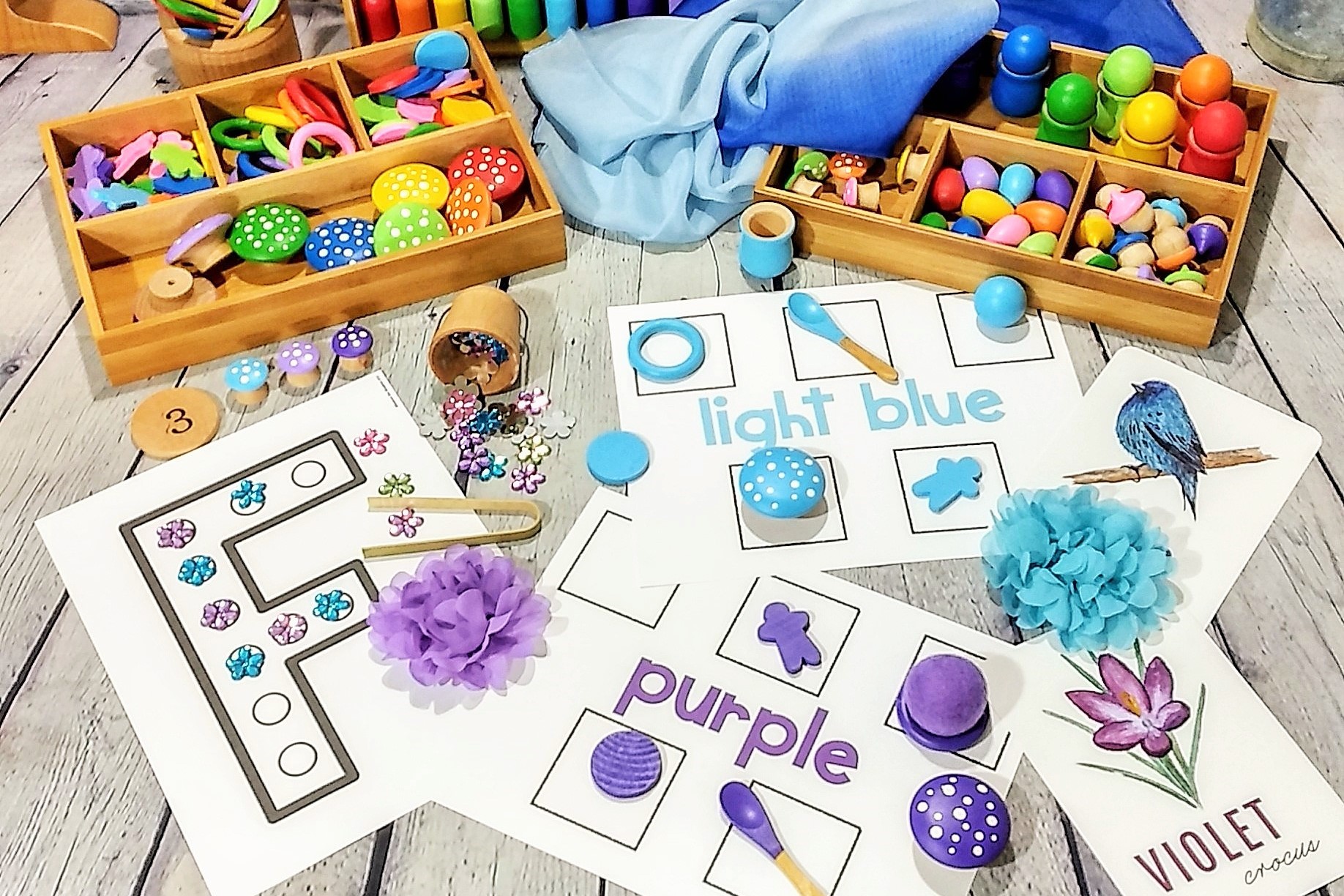Introducing Loose Parts in a Play Environment
Written by Becky Williams – Early Childhood Educator and Wooden Toy Maker ChickadeesWoodenToys.Etsy.com @Chickadeeswoodentoys
Tennessee, USA
I remember the first time I heard the term "loose parts". In my mind I thought of parts and pieces broken, lost, or missing from their appropriate box or game. Since then I have learned and seen how wrong that thinking was. While the term Loose Parts has become second nature to me, you may know these toys as bits and pieces, odds and ends, little things, and even clutter. My hope is to share my understanding and excitement so that you too can see the benefits of Loose Parts in your child's play.
What are Loose Parts?
Loose Parts def. - materials that can be moved, carried, combined, redesigned, lined up, and taken apart and put back together in multiple ways. Loose parts can be natural, recycled, or synthetic materials. Loose Parts are materials with no specific set of directions that can be used alone or combined with other materials. The versatility of these materials provides children with endless ways to create and explore.
It is helpful to think of loose parts as something that will encourage children to use imagination and creativity on their own terms and in their own unique way.
Many Loose Parts can be found in your kitchen, craft room, or garage. Some Loose Parts can be purchased very inexpensively at dollar stores or second hand shops. Nature walks are perfect for finding and discussing natural loose parts.
Introducing Loose Parts
Start small. When introducing loose parts for the first time, plan to start small. Both you and your child can easily become overwhelmed with too many options.
If this is your first time incorporating loose parts into your children's play, you may hear questions like "What is this for?" or "What am I supposed to do with these?". Answer these questions with "They can be whatever you want them to be.” or “How would you like to play with them?" Give examples of what you would do with them in a small world setting or a building experiment.
Playing with your child will help them to feel confident to make choices and independent decisions. You will both quickly warm to the idea of loose parts in the play environment. The goal is to encourage creativity and imagination.
Using Loose Parts in Play:
The wonderful part is allowing the children the freedom to investigate the materials, choose how they would like to use them, and take them to any area of the classroom or playroom.
A few areas where you could introduce loose parts:
Playdough Invitation
Sensory Tray
Block Center
Small World Area
Home Dramatic Play
Sorting Activity (size, color, number, beginning sound, etc.)
Outdoor Sandbox
Arts and Crafts
Nature Study
And on and on!
Loose Parts are yet another tool for Open Ended Play (click here to learn more) and Play Based Learning (click here to learn more). They provide endless opportunities for creativity, critical thinking skills, imagination, problem solving, fine motor practice, gross motor practice, and so much more. I think you will find that children are naturally drawn to Loose Parts, and you will quickly see the benefits of Loose Parts in a play environment.























